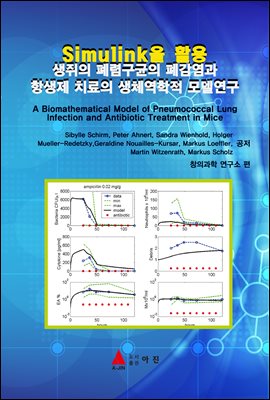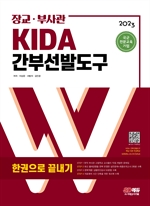
생쥐의 폐렴구균의 폐감염과 항생제 치료의 생체역학적 모델연구
- 저자Sibylle Schirm, Peter Ahnert, Sandra Wienhold, Holger Mueller-Redetzky, 외 저
- 출판사아진
- 출판일2020-07-13
- 등록일2020-12-21
- SNS공유


- 파일포맷PDF
- 파일크기8MB
- 공급사YES24
-
지원기기
PC
PHONE
TABLET
프로그램 수동설치
전자책 프로그램 수동설치 안내
아이폰, 아이패드, 안드로이드폰, 태블릿,
보유 1, 대출 0,
예약 0, 누적대출 4, 누적예약 0
책소개
Pneumonia is considered to be one of the leading causes of death worldwide. Theoutcome depends on both, proper antibiotic treatment and the effectivity of the
immune response of the host. However, due to the complexity of the immunologic
cascade initiated during infection, the latter cannot be predicted easily. We
construct a biomathematical model of the murine immune response during infection
with pneumococcus aiming at predicting the outcome of antibiotic treatment. The
model consists of a number of non-linear ordinary differential equations describing
dynamics of pneumococcal population, the inflammatory cytokine IL-6, neutrophils
and macrophages fighting the infection and destruction of alveolar tissue due to
pneumococcus. Equations were derived by translating known biological mechanisms
and assuming certain response kinetics. Antibiotic therapy is modelled by a
transient depletion of bacteria. Unknown model parameters were determined by
fitting the predictions of the model to data sets derived from mice experiments of
pneumococcal lung infection with and without antibiotic treatment. Time series of
pneumococcal population, debris, neutrophils, activated epithelial cells,
macrophages, monocytes and IL-6 serum concentrations were available for this
purpose. The antibiotics Ampicillin and Moxifloxacin were considered. Parameter
fittings resulted in a good agreement of model and data for all experimental
scenarios. Identifiability of parameters is also estimated. The model can be used to
predict the performance of alternative schedules of antibiotic treatment. We
conclude that we established a biomathematical model of pneumococcal lung
infection in mice allowing predictions regarding the outcome of different schedules
of antibiotic treatment. We aim at translating the model to the human situation in
the near future.
목차
제 1편 : SIMULINK 기본편1.1 SIMULINK의 시작 1
블록의 연결 5
블록 파라미터의 설정 7
시뮬레이션 파라미터 (Configuration Parameters)의 설정 8
시뮬레이션의 수행 9
블록 파라미터의 표시 9
복수 데이터의 표시 11
2.2 동적 시뮬레이션 13
이차 미분방정식 17
선형 상태변수 모델 23
DC 모터의 시뮬레이션 24
함수 블록의 사용 29
차분방정식(difference equation)의 모델링 34
Subsystem(부시스템)의 구성 37
제 2편 : 연구논문
A Biomathematical Model of Pneumococcal Lung Infection and
Antibiotic Treatment in Mice
1. Introduction 42
2. Methods 42
3. Modelling pharmacokinetics of antibiotics 46
4. Numerical Methods for Simulation 46
5. Results 49
6. Parameter sensitivity 51
7. Discussion 55
8. References 61

















